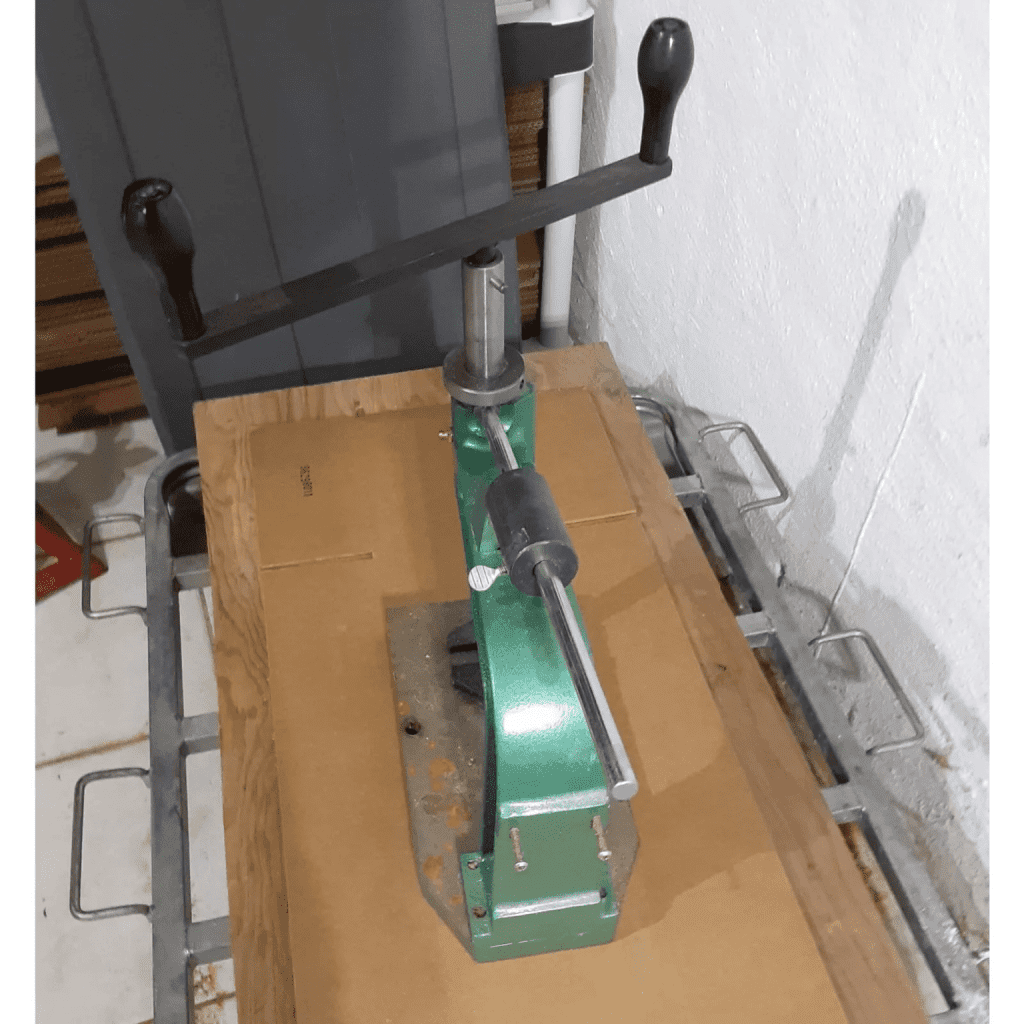The vintage hand tapping machine stands as a captivating relic of industrial history, representing the skilled craftsmanship that powered the evolution of manufacturing. This manually-operated tool was instrumental in the creation of threaded holes, a small yet vital part of numerous industrial processes. While the world has since shifted toward automation, the legacy of the hand tapping machine continues to influence modern manufacturing. In this article, we will delve into the history, usage, and lasting impact of this remarkable tool.

A Journey Through Time: The History of the Hand Tapping Machine
The hand tapping machine first emerged in the late 19th and early 20th centuries, during a period of significant growth and innovation in industrial technology. As factories expanded and industries became more specialized, the demand for precision and efficiency grew. Early manufacturing relied heavily on manual labor, and the introduction of tools like the hand tapping machine represented a leap forward in productivity.
These machines were initially crafted for small workshops and factories, where their manual operation allowed for greater control and accuracy. Over the years, the design of the hand tapping machine evolved to incorporate improved materials and mechanisms. These advancements enhanced the machine’s durability, efficiency, and ease of use, making it a valuable tool for skilled craftsmen.
While modern automated machinery now dominates the industrial landscape, the vintage hand tapping machine holds a special place in the history of industrial tools, symbolizing an era where human skill and craftsmanship were at the heart of technological progress.
Precision Engineering: How the Hand Tapping Machine Worked
At its core, the hand tapping machine was designed for one primary function: creating threaded holes in a variety of materials such as metal and wood. These threads allowed components to be screwed together, forming the backbone of many assembly processes in industries like automotive, aerospace, and construction.
Operators used the machine by manually turning a handle, which drove a tap into a pre-drilled hole in the workpiece. The process required precision, as the threads had to be perfectly aligned and formed to ensure that screws or bolts could fit snugly into the hole. The tap itself, a specialized cutting tool, created internal threads by gradually carving away material from the inside of the hole.
Although manual, the hand tapping machine was prized for its accuracy and versatility. Craftsmen could adapt the machine to different materials, thread sizes, and depths, making it a highly customizable tool. The ability to fine-tune the process made the machine a favorite among machinists who required precision and reliability.
The Hand Tapping Machine’s Role in Early Manufacturing
During its heyday, the hand tapping machine played a pivotal role in various industries, especially those requiring detailed assembly work. In the automotive industry, it was used to create threads for engine components and other critical parts. Aerospace manufacturers relied on the machine for making precision threads in aircraft components, where even the slightest error could have catastrophic consequences.

Despite its manual operation, the hand tapping machine was valued for the control it offered. Skilled operators could make slight adjustments to the process, ensuring that each thread was perfectly formed. This level of craftsmanship is often missing in today’s automated production lines, where speed takes precedence over hands-on precision.
The Decline of the Hand Tapping Machine and the Rise of Automation
As industrial technology advanced, the hand tapping machine gradually gave way to automated tapping machines and CNC (Computer Numerical Control) machinery. These modern machines offered faster production rates and required less manual labor, making them more suitable for large-scale manufacturing operations.
However, while automated machines have largely replaced the hand tapping machine in terms of functionality, they have not completely erased its legacy. Many engineers and machinists still appreciate the craftsmanship involved in using a manual tapping machine, and in some specialized industries, vintage hand tapping machines are still used for certain applications where precision and control are paramount.

A Legacy of Craftsmanship: Collecting and Displaying Vintage Machines
In recent years, vintage hand tapping machines have become highly collectible items. Enthusiasts and historians often seek out these machines as a testament to a bygone era of industrial craftsmanship. Many of these machines are now displayed in museums, showcasing their historical significance and the role they played in shaping modern manufacturing practices.
The hand tapping machine is celebrated not only for its practical contributions but also for the ingenuity behind its design. For many, it represents an era when tools were built to last, and when skilled operators took pride in their ability to create finely crafted components.
Modern Machining and the Influence of the Hand Tapping Machine
While automation and digital technology dominate modern manufacturing, the influence of the vintage hand tapping machine is still felt today. Many of the principles behind manual tapping—precision, control, and attention to detail—are just as important in modern machining as they were in the past.

In fact, the resurgence of interest in handmade and artisanal goods has led some manufacturers to revisit traditional machining techniques, including the use of hand tapping machines. This renewed appreciation for manual craftsmanship highlights the lasting impact of these tools, even in an age dominated by automation.
Conclusion: The Timeless Impact of the Vintage Hand Tapping Machine
The vintage hand tapping machine is more than just a piece of industrial equipment—it is a symbol of the craftsmanship and ingenuity that powered the industrial revolution. Its history, usage, and legacy are a reminder of the crucial role manual tools played in shaping modern industry. Even though the world has moved toward automation, the principles and precision behind the hand tapping machine continue to inspire machinists and engineers today. In a world where speed often trumps skill, the hand tapping machine stands as a testament to the enduring value of human craftsmanship.


